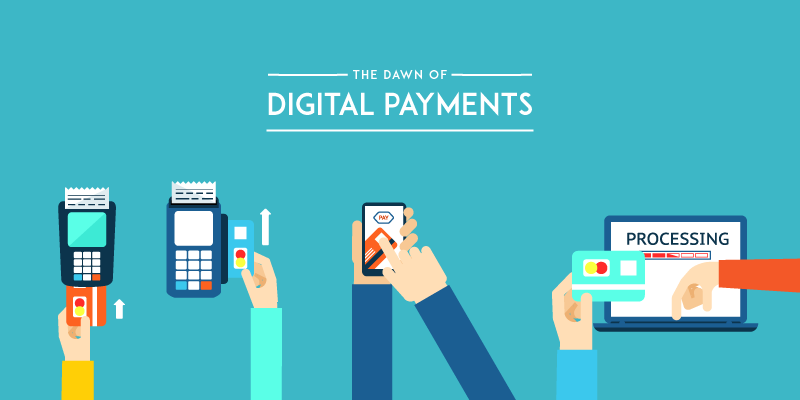Visa, the global leader in digital payments technology, announced an independent study, conducted by Roubini ThoughtLab and commissioned by Visa, examining the economic impact of increasing the use of digital payments in major cities around the world, including Delhi, Mumbai, Bangalore and Chennai could help these cities realize, USD 7.2 billion annual net benefits.

The study estimates that relying more on electronic payments, such as cards and mobile payments, could yield a net benefit of up to US$D 470 billion per year across the 100 cities studied ~ roughly the equivalent to 3% of the average GDP for these cities. For instance
- Mumbai, with a population of 19,547,000 and GDP 0f US$104.1bn, could gain USD 2.9 billion annual net benefits. Estimated catalytic impacts for the city over the next 15 years include 4.4 basis point increase in GDP growth rate and 1.3% increase in employment.
- Delhi, with a population of 17,266,000 and GDP of USD 74.4bn, could gain annual net benefits of USD 2.2 billion. Estimated catalytic impacts for the city over the next 15 years reflect 8.4 basis point increase in GDP growth rate and 1.5% increase in employment.
- Bangalore, which has a population of 9,394,000 and GDP of USD 44.7bn, could realize USD 1.3 billion annual net benefits experienced by consumers, businesses and governments in the city. Estimated catalytic impacts for the city over the next 15 years translate into 7.7 basis point increase in GDP growth rate and 1.4% increase in employment.
- Chennai, with a population of 959,4000 and GDP of USD 30.9bn, could save an estimated annual net benefit of US$0.8 billion through the cashless transition in the city. Estimated catalytic impacts for the city over the next 15 years include 9.8 basis point increase in GDP growth rate and 1.7% increase in employment.
Cashless Cities: Realizing the Benefits of Digital Payments, is a unique study that quantifies the potential net benefits experienced by cities which move to an ‘achievable level of cashlessness’ – defined as the entire population of a city moving to digital payment usage equal to the top 10% of users in that city today. The study does not look at eliminating cash. Rather, it seeks to quantify the potential benefits and costs of significantly increasing the use of digital payments.
By reducing reliance on cash, the study estimates the immediate and long-term benefits for three main groups—consumers, businesses and governments. According to the study, these benefits could add up to combined direct net benefits of approximately U.S. USD 470 billion across the 100 cities that were analyzed:
- Consumers across the 100 cities could achieve nearly USD 28 billion per year in estimated direct net benefits. This impact would be derived from factors including up to 3.2 billion hours in time savings conducting banking, retail and transit transactions, in addition to a reduction in cash-related crime.
- Businesses across the 100 cities could achieve more than US$D 312 billion per year in estimated direct benefits. This impact would be derived from factors including up to 3.1 billion hours in time savings processing incoming and outgoing payments and increased sales revenues stemming from extended online and in-store customer bases. The study also found that accepting cash and checks costs businesses 7.1 cents of every dollar received compared to 5 cents of every dollar collected from digital sources.
- Governments across the 100 cities could achieve nearly USD 130 billion per year in estimated direct benefits. This impact would be derived from factors including increased tax revenues, increased economic growth, cost savings from administrative efficiencies and lower criminal justice costs due to reduced cash-related crime.
TR Ramachandran, Group Country Manager, Visa, India & South Asia, said
Cities are the new engines of economic growth. To unlock their true economic potential, and become globally competitive, cities must embrace digital payments. This global study shows how becoming more cashless delivers real benefits to governments, businesses and consumers, stimulating long-term economic growth. Each of the surveyed cities, including Delhi, Mumbai, Bangalore, and Chennai could achieve, on average, USD 7.2 billion in annual net benefits – roughly the equivalent to 3 percent of each city’s average GDP.
As cities increase use of digital payments, the positive impacts can extend beyond financial benefits to consumers, businesses, and government. The shift to digital payments also may have a catalytic effect on the city’s overall economic performance, including GDP, employment, wage, and productivity growth.
Lou Celi, Head of Roubini ThoughtLab, said
The use of digital technologies – from smart phones and wearables to artificial intelligence and driverless cars – is rapidly transforming how city dwellers shop, travel, and live. Without a firm foundation in electronic payments, cities will not be able to fully capture their digital future, according to our analysis.
Cashless Cities: Realizing the Benefits of Digital Payments offers 61 recommendations for policymakers to help their cities become more efficient through greater adoption of digital payments. Recommendations include undertaking financial literacy programs to help move the unbanked into the banking system, implementing incentives to stimulate innovation focused on scaling new payment technologies, implementing secure open-loop payment systems across all transportation networks and more.
Visa and Roubini ThoughtLab created an online data visualization tool as a companion to ‘Cashless Cities: Realizing the Benefits of Digital Payments’. Using the data visualization tool, individuals can increase or decrease the level of digital usage in each of the 100 cities included in the study to better explore the benefits of a world, less dependent on cash. Visit the online data visualization tool and download the report from here.

